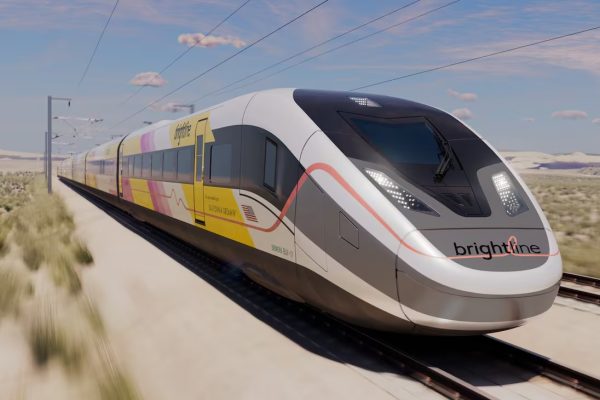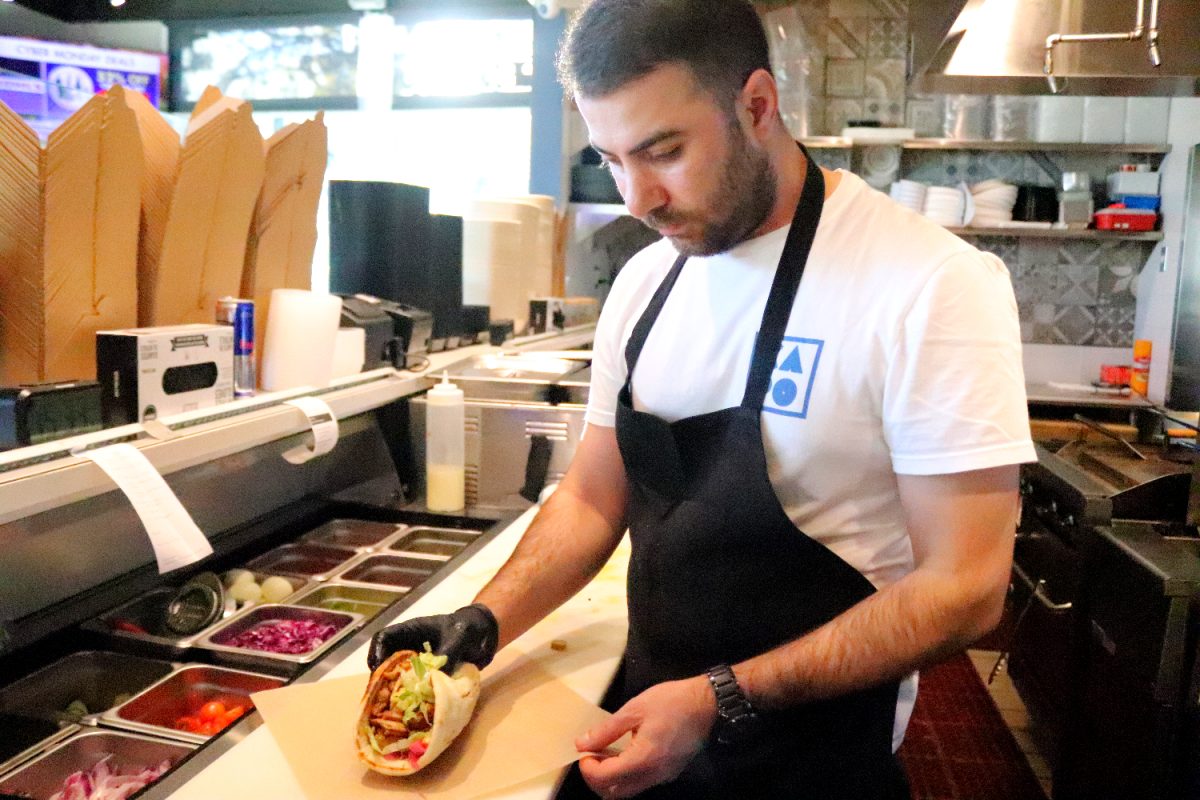At 4:45 a.m., Dylan Liddiard arrived at San Jose Mineta International Airport for his 5:45 a.m. flight to Los Angeles. After making his way through the Transportation Security Administration (TSA) line, he walked toward his gate. He spent the remaining minutes before his flight sitting in the uncomfortable waiting area, trying to get work done.
Once aboard the plane, this smooth and familiar process turned awry. The flight was delayed due to mechanical problems, and Liddiard was forced to sit on the runway for over an hour before the plane was able to take off. What was supposed to be a quick trip had quickly developed into a morning-long ordeal, pushing Liddiard’s arrival.
“It’s really inconvenient because you have to fly out the night before you have anything so you don’t have the risk of your flight being canceled or delayed,” Liddiard said.
Liddiard, a lawyer at Wilson Sonsini in Palo Alto faces this unfortunate and inconvenient reality quite often, as he frequently travels to and from Los Angeles for work.
“When I fly from Los Angeles to San Jose, it can take me over six hours to eight hours to get there, and when I drive it takes five,” Liddiard said.
This experience is similar for many who find themselves frequently traveling between San Francisco and Los Angeles. The choice between flying in driving is often unsatisfactory, as neither option is especially convenient. However, it doesn’t have to be this way. Another travel alternative, high-speed rail, is reinventing travel around the globe.
Designed to travel at speeds exceeding 150 miles per hour, high-speed rail is argued to be one of the most important and successful modes of transportation that can be found around the globe. Advocates for high-speed rail believe that this technology helps connect large cities while minimizing travel time and negative environmental impacts.

The vast distances separating major cities and heavily congested motorways in the western United States make it the ideal location to implement this technology. A high-speed rail system would have a significant impact on supporting the nation’s shift toward sustainable infrastructure by reducing the demand for cars and planes, which account for a significant portion of the country’s yearly pollution rates.
California, in particular, is a place that could benefit greatly from faster and more efficient transportation because of the immense distance between the state’s largest cities. The construction of a high-speed rail in California has begun, however, progress is not linear, as there are many barriers that stand in the way of its completion.
The first of its kind: San Francisco to Los Angeles in record time
The California High-Speed Rail Authority (CAHSRA) is the organization responsible for planning, building, and running the first high-speed rail system in the country.
The goal of the San Francisco to Los Angeles high-speed rail project is to connect the larger California cities with a train capable of traveling over 200 mph. The rail will have up to 24 stations over the 800-mile track, working with regional rail lines to implement a statewide modernization plan.
“Construction started in 2015 and a lot of momentum has been made since then. We have 119 miles under construction in the Central Valley in what we call the initial operating segment, which is from Merced to Bakersfield,” said CAHSRA Public Information Officer Van Tieu.
CAHSRA construction has created upwards of 13,000 jobs as they focus on building the infrastructure necessary for rail lines. Currently, the authority has construction crews building new structures and bridges over roads while also relocating important utilities such as sewage lines.

“Just this year alone, we completed just a little bit over 40 civil structures, and we also awarded the contract for the track and systems. So by next year, we will begin laying track,” Tieu said.
Simultaneously, they are also working closely with several other transportation organizations to bring the vision to life. Partnerships with regional rail lines like Caltrain will minimize impacts on surrounding communities while speeding up the project implantation.
“Caltrain electrification being one of them, the authority had invested about 30% into that project, because the vision there is, once it gets into the peninsula, we’ll be running a blended corridor on the Caltrain corridor,” Tieu said.
Another major consideration for the organization while planning the project was creating the maximum amount of environmental benefits. The zero-emission trains are powered entirely by renewable energy, which is projected to keep more than 3,500 tons of harmful pollutants out of the air every year. In addition, CAHSRA has put forth efforts to reduce its ecological footprint during construction by planting trees and preserving and restoring habitats.
“The construction process adopts a net-zero approach to reduce air emissions and greenhouse gasses and offsetting construction fleet emissions,” Tieu said. “Ninety-five percent of the waste made from the construction is recycled, reused or composted.”
While significant ground has been made on the project thus far, progress has not been linear. The potential railway was originally cleared by California voters through Proposition 1A in 2008, but since then, various hurdles have slowed its advancement.
According to Tieu, CAHSRA made the decision to build the rail through major Central Valley cities like Fresno and Bakersfield rather than next to Interstate 5. This significantly delayed clearance because it required more extensive environmental reviews and more complicated infrastructure than the less populated and rural I-5 corridor.
The Authority says, however, that the investment will be worth it, primarily because it will now connect the Central Valley in ways not previously possible.
“When I-5 was built, It was just the fastest point from A to B, which was the Bay Area to LA, which really left the central valley behind,” Tieu said. “So it’s also a lot of social justice baked into it, making sure that we are reconnecting these communities.”
By building the high-speed rail through the Central Valley, the project not only brings connectivity but also offers the opportunity to test the new trains.
“It’s one of the only areas in the country where it’s straight enough to build test tracks, and because we do have to test the trains at speeds of 240 miles per hour for two years before we could start the passenger service”.
According to their website, the California High-Speed Rail Authority Board cleared the 38-mile segment between Palmdale and Burbank, the final environmental milestone that was holding back the San Francisco to Los Angeles project, on June 27, 2024.
The project still has one daunting obstacle: funding. The estimated cost of the project has increased over time due to delays, inflation, and rising construction costs. This has created a difference between available funds and projected expenses, further delaying project completion, which is dependent on receiving more money.
“We’ve expended or invested $11.7 billion and it already has had $18 billion in economic output,” Tieu said. “We’re in the process of a five-year plan with the goal of securing $8 billion in federal funding. Last year, we received $3.3 billion towards that goal.”
Even with this progress, the project remains in need of additional funding in order to complete the Central Valley segment and extend the line throughout the major population centers like Los Angeles and San Francisco.
“For the initial operating segment, Merced to Bakersfield, we are looking at 2030 to 2033,” Tieu said. “As far as high-speed rail running in the Bay Area, we don’t have a date until funding is secured.”
The finished project is still several years away from completion, but many are already in support of the possibilities that the rail can bring.
“I live in LA, but I’m a Berkeley student, so I have to go back and forth a lot, and it would be much easier if there was a quicker train,” said Marcus Koh, a supporter of California rail modernization.
In addition to the San Francisco to Los Angeles line, Koh is excited about the opportunities for travel that high-speed rail can bring to the country in the future.
“If there was a train that was high-speed going around the country, then I would take it because it can be cheaper and more convenient than air travel,” Koh said.
Private companies transform transit
In addition to the creation of high-speed rail between San Francisco and Los Angeles, a new project is emerging that aims to revolutionize travel between more major U.S. cities.
Brightline is a private provider aimed at reinventing train travel. They currently have a luxury train line in operation from Orlando to Miami. However, they have recently launched a new branch of the company, known as Brightline West.
“This is going to represent the first true high-speed rail to go into service in our country,” Transportation Secretary Pete Buttigieg said in an interview with News 3 Las Vegas.
Brightline West broke ground in early 2024 and is expected to take approximately four years to build.

“We’re working very closely with the Nevada Department of Transportation, with the company that is driving this work, Brightline West, and all of our partners within and beyond the federal government to try to help them keep this on track,” Buttigieg said.
The decision made by Brightline West to build the rail alongside Interstate 15 is another significant factor in the lower construction time necessary before project completion.
“Brightline, they’re having a bit of an easier time because they’re just going right by the freeway, so less right of way and less utility movement,” Tieu said.
As implied, less work is necessary for land acquisitions and environmental clearance, as that was previously done in order to build the highway. In addition, infrastructure and utilities are already established, which is often the most time-consuming part of the rail-building process. Finally, proximity to Interstate 15 also allows construction crews and equipment easier transportation to the construction site.
While the construction timeline differs greatly between CAHSRA and Brightline West, the economic impacts are strikingly similar, especially with job creation.
“It’s already bringing a lot of benefits because of the construction jobs. Thousands of jobs were associated with building that railway. It’s not every day that you see a new high-speed rail going into place in the U.S. and I think it’s really going to mark the beginning of a new era of American transportation,” Buttigieg said.
The planning, building, and running of a U.S. high-speed rail system are all daunting tasks. However, it has been deemed necessary as the next important step for national improvements.
“We’ve got to create more alternatives. We cant just expect that the old ways are going to help America win and compete in the 21st century. We need a modern transportation system,” Buttigieg said.























